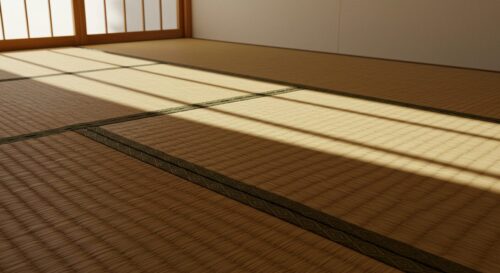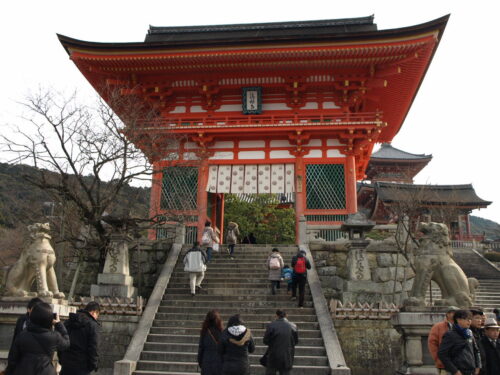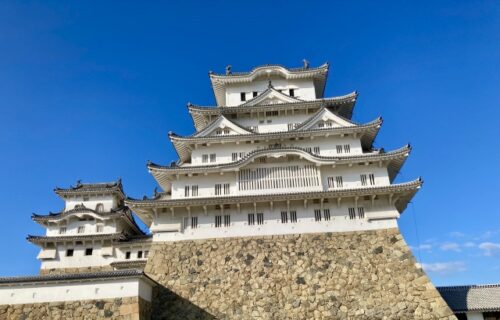Miyazaki Prefecture’s Takachiho Kagura: A Complete Guide to Japan’s Sacred Night Dance
2025年10月12日
Uncover Miyazaki Prefecture’s Takachiho Kagura, Japan’s ancient sacred night dance. This guide comprehensively explains its history, profound mythology (especially the Ama-no-Iwato myth), and spiritual significance. You’ll learn where and how to experience these captivating performances, gain essential visiting tips, and understand this unique cultural heritage to plan your perfect Takachiho journey.
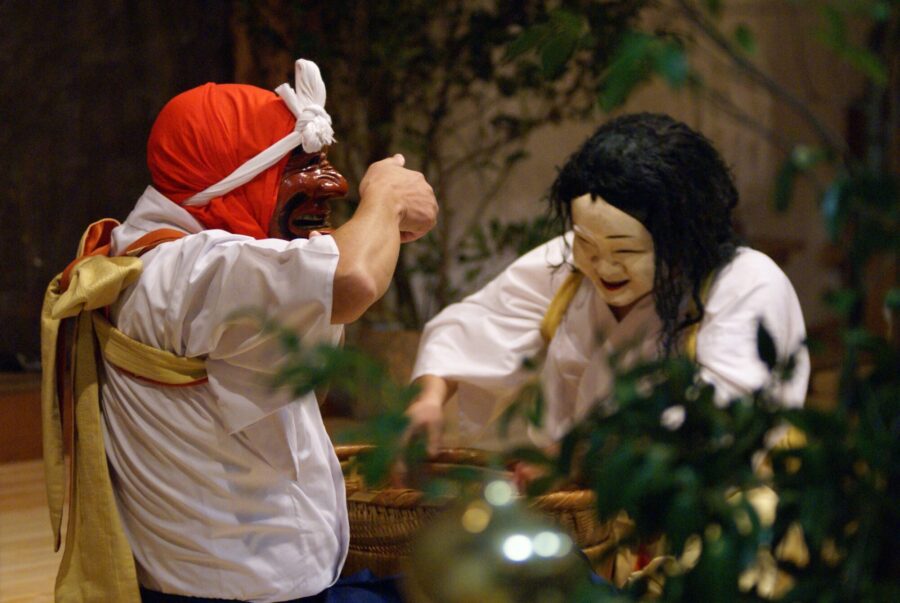
目次
Understanding Takachiho Kagura in Miyazaki Prefecture
What is Takachiho Kagura
Takachiho Kagura is a sacred Shinto theatrical dance deeply rooted in shamanism, performed in Takachiho Town, Miyazaki Prefecture, on Japan’s Kyushu Island. This ancient art form celebrates the Shinto deities, known as kami, and is believed to originate from this region, often considered a place where the gods first descended from the heavens.
The primary purpose of Takachiho Kagura is to offer gratitude for bountiful harvests and to pray for prosperity and abundant crops in the coming year. It also serves to appease deities, ward off misfortune, and foster a spiritual connection between the human and divine realms. The performances are characterized by energetic music, dramatic masks, and intricate dance movements, often depicting scenes from Japanese mythology.
Takachiho Kagura is presented in two main forms:
| Feature | Takachiho Kagura (Nightly Performance) | Takachiho Yokagura (Seasonal All-Night Performance) |
|---|---|---|
| Venue | Kagura Hall, Takachiho Shrine | Private homes or community centers (Kagura-yado) in approximately 20 villages |
| Duration | Approximately 1 hour | All-night (from sunset to dawn) |
| Number of Dances | Four representative dances out of a total of 33, such as Tajikarao’s Dance and Uzume’s Dance | Full 33 dances |
| Season | Year-round, every night | Mid-November to early February |
| Purpose | Public viewing, showcasing key mythological highlights | Traditional Shinto ritual, community dedication, prayer for local prosperity |
Recognizing its profound cultural value, Takachiho Kagura was designated an Important Intangible Folk Cultural Property of Japan in 1978.
The Sacred Significance of Takachiho Kagura
The profound sacredness of Takachiho Kagura is inextricably linked to the Ama-no-Iwato myth, one of the most pivotal legends in Japanese mythology. This myth recounts how the sun goddess Amaterasu Omikami, angered by her brother’s mischievous acts, retreated into the Heavenly Rock Cave (Ama-no-Iwato), plunging the world into darkness. To entice her out and restore light, the other gods gathered and devised a plan, which included the goddess Ame-no-Uzume-no-Mikoto performing a humorous and captivating dance. Takachiho Kagura re-enacts these divine events, serving as a ritualistic performance that brings these ancient myths to life.
Beyond its mythological reenactment, Takachiho Kagura holds significant spiritual weight as an agricultural ritual. It is a heartfelt expression of gratitude for the year’s harvest and a fervent prayer for continued abundance and fertility in the coming seasons. The performances are believed to invite the local guardian deities (Ujigami) and other kami to descend and interact with the villagers, fostering a deep connection between humans and the divine. This sacred ceremony is a time of communal merriment and spiritual communion, reinforcing the belief that the gods still visit and protect the region. The performers, often local villagers, dedicate these dances to the gods, embodying a continuous legacy of faith and tradition.
A Brief History of Takachiho Kagura
The origins of Takachiho Kagura are deeply embedded in Japan’s ancient past, tracing back to early Shinto rituals and shamanistic practices. Takachiho, being a region rich in mythological tales, is widely believed to be the birthplace of this sacred dance.
Historical records suggest that Takachiho Kagura was established between the late Heian period (794–1185) and the Kamakura period (1185–1333). For centuries, until the end of the Edo period, the dances were primarily performed and preserved by the priests of Takachiho Shrine. Over time, these ritualistic performances evolved and were formally organized into a repertoire of 33 distinct dances. This comprehensive set of performances, known as Takachiho Yokagura, was then passed down through generations within various communities across the Takachiho region.
The tradition has been diligently maintained for over 800 years, with local villages continuing to host the all-night performances annually. This enduring legacy was officially recognized in 1978 when Takachiho Kagura was designated an Important Intangible Folk Cultural Property of Japan, acknowledging its significant role in preserving Japanese cultural heritage. Today, it remains a vibrant and essential part of the cultural and spiritual life of Miyazaki Prefecture.
The Mythology Behind Takachiho Kagura
The Ama-no-Iwato Myth and Its Connection
Key Deities and Their Roles in Takachiho Kagura
| Deity Name | Role in the Myth | Significance in Kagura |
|---|---|---|
| Amaterasu Omikami | The Sun Goddess; hid in Ama-no-Iwato cave, plunging the world into darkness. | Her withdrawal and triumphant return are the central theme. Represented by her emergence and the restoration of light. |
| Susanoo-no-Mikoto | Amaterasu’s mischievous brother; his destructive acts led to Amaterasu’s retreat. | Often depicted through his wild and unruly nature, setting the stage for the crisis. |
| Ame-no-Uzume-no-Mikoto | Goddess of Dawn, Mirth, and Entertainment; performed a provocative dance to lure Amaterasu out. | Her dance, known as the Uzume Dance, is a highlight of Kagura, characterized by its humor and energy. |
| Omoikane-no-Kami | God of Wisdom and Intelligence; devised the plan to entice Amaterasu from the cave. | Represents the strategic thinking and collective effort of the gods to solve the crisis. |
| Ame-no-Tajikarao-no-Kami | God of Heavenly Strength; pulled open the rock door of Ama-no-Iwato. | His powerful dance, the Dance of Tajikarao, depicts his search for the cave and his heroic act of opening its door. |
| Izanagi-no-Mikoto & Izanami-no-Mikoto | The divine couple who created Japan and many gods, including Amaterasu and Susanoo. | Sometimes featured in dances like the Goshintai (Sacred Object) or “Sake Brewing” dance, symbolizing creation, fertility, and blessings for marriage and harvest. |
Experiencing Takachiho Kagura Performances
Witnessing Takachiho Kagura is a profound cultural experience, offering a direct connection to Japan’s ancient myths and spiritual traditions. Whether you attend the daily abbreviated performance or the rare all-night village rituals, understanding what to expect will enrich your visit.
Where to See Takachiho Kagura Nightly
For visitors to Takachiho, the most accessible way to experience Kagura is through the nightly performances held at the Kagura Hall (神楽殿) within the precincts of Takachiho Shrine. These performances provide a condensed yet captivating glimpse into the full Yokagura tradition.
| Aspect | Details |
|---|---|
| Venue | Kagura Hall (神楽殿) at Takachiho Shrine |
| Time | Every night, 8:00 PM to 9:00 PM (approximately one hour) |
| Admission Fee | 1,000 JPY per person |
| Tickets | Available from 7:00 PM at Kagura Hall reception for same-day purchase (approximately 50 spots). Online reservations are also available for up to 200 people, bookable up to one month in advance until 5:00 PM on the day of the performance. |
| Dances Performed | Four representative dances out of the 33 full Yokagura performances: “Tajikarao no Mai” (Dance of Tajikarao), “Uzume no Mai” (Dance of Uzume), “Totori no Mai” (Totori Dance), and “Goshintai no Mai” (Dance of the Sacred Object/Two Gods). |
| Closures | Performances are generally closed on December 31st and January 1st. They may also be closed on November 22nd and 23rd when the “Mythical Takachiho Kagura Festival” is held. |
| Seating | On traditional tatami mats. No assigned seating; arriving early (around 7:00 PM) is recommended for better views. Cushions (zabuton) can be rented from local accommodations, or visitors may bring their own. A side area may accommodate folding chairs. |
English handouts are typically provided to help visitors understand the narrative of the dances, which are based on the Ama-no-Iwato myth. Photography is generally permitted, allowing you to capture the memorable experience.
Seasonal All-Night Takachiho Kagura Performances
For a truly immersive and authentic experience, the full “Takachiho Yokagura” (夜神楽) is performed in various villages across Takachiho from mid-November to early February of the following year. These are all-night rituals, commencing at dusk and continuing until dawn, featuring all 33 sacred dances.
The Yokagura is a Shinto ritual dedicated to local deities, expressing gratitude for bountiful harvests and praying for prosperity in the coming year. Each performance takes place in a different private home or community center, known as a “Kagura-yado,” with the schedule varying by village and typically released around October annually.
Attending a seasonal Yokagura offers a unique opportunity to engage with local communities and witness the tradition in its most complete form. While often free to attend, it is customary to make an offering, known as “Goshinzen,” at the reception as a sign of respect for the ritual.
What to Expect During a Takachiho Kagura Performance
Regardless of whether you attend the nightly or seasonal performance, Takachiho Kagura is a captivating display of ancient Japanese performing arts. The dances are accompanied by traditional music featuring drums and flutes, creating a mesmerizing atmosphere.
The nightly performance at Takachiho Shrine focuses on four key dances that vividly re-enact episodes from the Ama-no-Iwato myth. These include:
- Tajikarao no Mai (Dance of Tajikarao): Depicts the god Tajikarao searching for Amaterasu Omikami, listening intently for sounds from the cave.
- Uzume no Mai (Dance of Uzume): Showcases the goddess Ame-no-Uzume performing an amusing, sometimes provocative, dance to lure Amaterasu out of the cave.
- Totori no Mai (Totori Dance): A heroic dance representing the opening of the Ama-no-Iwato cave.
- Goshintai no Mai (Dance of the Sacred Object/Two Gods): Often features two deities in an entertaining, sometimes comedic, dance symbolizing nation-building and marital harmony, and may involve interaction with the audience.
The all-night Yokagura, with its full complement of 33 dances, delves deeper into various myths and legends, often including dances for safe childbirth, warding off misfortune, and praying for good harvests. These longer events can involve communal meals, known as Naorai, where gods and villagers share food and drink like sake and shochu, fostering a warm community spirit.
Tips for Attending Takachiho Kagura
To make the most of your Takachiho Kagura experience, consider the following:
- Book in Advance: For the nightly Takachiho Shrine performance, especially during peak seasons, consider making online reservations to secure your spot and preferred seating.
- Arrive Early: If you opt for same-day tickets, arriving at Kagura Hall by 7:00 PM is advisable to ensure entry and get a good viewing spot, as seating is unassigned.
- Bring Comfort Items: Seating at Kagura Hall is on tatami mats. Bringing a cushion (zabuton) or a small pillow will significantly enhance your comfort during the one-hour performance. Some accommodations offer zabuton rentals.
- Dress Warmly: If attending a seasonal all-night Yokagura between November and February, be prepared for cold temperatures. Dress in layers and bring extra warm clothing, as these performances are held overnight in unheated community spaces.
- Understand the Story: While English handouts are provided at Takachiho Shrine, a basic understanding of the Ama-no-Iwato myth and other Japanese creation myths beforehand will greatly deepen your appreciation of the dances.
- Respect the Ritual: For the seasonal Yokagura, remember that it is a sacred Shinto ritual. Be respectful of the performers and the local customs, including making an offering if attending a village performance.
For the latest schedules and detailed information on performances, it is recommended to check the official Takachiho Town Tourism Association website: Takachiho Town Tourism Association and Takachiho Online. You can also find information on the Kyushu Tourism Organization website: Visit Kyushu.
Exploring Takachiho Town and Miyazaki Prefecture
While Takachiho Kagura draws visitors to its sacred performances, the town of Takachiho and the wider Miyazaki Prefecture offer a wealth of natural beauty, mythological sites, and local delicacies that enrich any visit. Exploring these surrounding attractions provides a deeper understanding of the region’s spiritual and cultural landscape.
Takachiho Gorge and Other Local Attractions
The centerpiece of Takachiho’s natural wonders is the breathtaking Takachiho Gorge. Formed by ancient volcanic eruptions from Mount Aso, this V-shaped gorge features dramatic columnar jointing cliffs carved by the Gokase River. Visitors can rent rowboats to navigate the emerald-green waters, offering an unparalleled view of the 17-meter-high Manai Falls, one of Japan’s 100 most beautiful waterfalls, cascading directly into the gorge. A paved walking path along the gorge’s edge also provides stunning vantage points from above, particularly vibrant during the autumn foliage season or when illuminated in summer.
Beyond the gorge, Takachiho is home to significant mythological sites:
- Amano Iwato Shrine (天岩戸神社): Dedicated to the sun goddess Amaterasu Omikami, this shrine is central to the Ama-no-Iwato myth, where the goddess famously hid in a cave, plunging the world into darkness. The shrine complex consists of Nishi Hongu (West Main Shrine) and Higashi Hongu (East Main Shrine).
- Amano Yasukawara (天安河原): A short, scenic walk from Amano Iwato Shrine leads to this mystical riverbed cave. Legend states it was here that the myriad gods gathered to deliberate on how to lure Amaterasu out of her hiding place. The site is now famous for the countless stacks of stones left by visitors, believed to grant wishes, making it a powerful spiritual spot.
- Kunimigaoka (国見ヶ丘): This observation deck, recognized with a star in the Michelin Green Guide, offers panoramic views of the Takachiho Basin and the distant Aso mountain range. It is particularly renowned for its spectacular “sea of clouds” (unkai) phenomenon, which often appears on clear, windless mornings from autumn to early winter, creating a truly ethereal landscape.
- Takachiho Amaterasu Railway: For a unique scenic experience, visitors can ride the Grand Super Cart along the former Takachiho Railway line, crossing Japan’s highest railway bridge and offering picturesque views of the surrounding rice terraces and natural scenery.
No visit to Takachiho is complete without sampling its distinctive local cuisine. The region is celebrated for Takachiho Beef, a high-quality wagyu known for its exquisite marbling, which has earned national accolades. Another local specialty is Nagashi Somen, a fun and refreshing dish where thin noodles are caught with chopsticks as they flow down bamboo chutes filled with cold water. Additionally, visitors can savor Chicken Nanban, a Miyazaki Prefecture staple of fried chicken dipped in sweet and sour sauce and topped with tartar sauce, and Kappo-dori, a chicken and vegetable stew steamed in a bamboo tube, reflecting the region’s unique culinary traditions.
Getting to Takachiho
Takachiho, while nestled in the mountains, is accessible from major cities in Kyushu, though planning is essential due to its somewhat remote location. The most common modes of transport are by car or bus. For flexibility in exploring the scattered attractions, renting a car is highly recommended. Rental outlets are available at major airports like Kumamoto Airport and Miyazaki Airport, as well as in nearby cities such as Nobeoka.
Below is a summary of common routes to Takachiho:
| Starting Point | Transportation Method | Approximate Travel Time | Notes |
|---|---|---|---|
| From Fukuoka (Hakata Station/Airport) | Highway Bus (Gokase-go) | 3 to 4 hours | Direct bus service available from Hakata Bus Terminal and Fukuoka Airport International Terminal to Takachiho Bus Center. Reservations are recommended. |
| Shinkansen + Bus | Around 4 hours | Take the Kyushu Shinkansen to Kumamoto Station, then transfer to a direct bus to Takachiho Bus Center. | |
| From Kumamoto (Kumamoto Station/Airport) | Direct Bus | 2 to 3 hours | Buses operate from Kumamoto Station and Kumamoto Sakuramachi Bus Terminal to Takachiho Bus Center. Service frequency may vary (e.g., 1-2 buses per day). |
| Car | Around 1.5 hours | Driving offers the most flexibility for exploring Takachiho and its surroundings. | |
| From Miyazaki (Miyazaki Station/Airport) | Train + Bus | 2.5 to 3 hours | Take a JR Limited Express or local train to Nobeoka Station, then transfer to a local bus to Takachiho Bus Center. Direct bus services from Miyazaki to Takachiho may be suspended or infrequent. |
Once in Takachiho, the town center, including Takachiho Shrine, is often walkable from the bus center. However, attractions like Takachiho Gorge, Amano Iwato Shrine, Amano Yasukawara, and Kunimigaoka are several kilometers away and are best reached by local bus (though infrequent), taxi, rental car, or even electric bicycle rentals available near the bus center.
For more detailed and up-to-date travel information, consider consulting official tourism resources such as the Japan National Tourism Organization (JNTO) or the Takachiho Town Tourism Association website.
Conclusion
Miyazaki Prefecture’s Takachiho Kagura is far more than just a performance; it is a vibrant, living link to Japan’s ancient spiritual heritage and the very genesis of its mythology. Designated an Important Intangible Folk Cultural Property of Japan, this sacred night dance embodies centuries of tradition, devotion, and artistic expression. It offers a profound insight into the Shinto worldview, where deities interact with the human realm, influencing harvests, prosperity, and communal well-being.
At its heart, Takachiho Kagura vividly reenacts the pivotal Ama-no-Iwato myth, the tale of the sun goddess Amaterasu Omikami retreating into a heavenly cave and plunging the world into darkness. The subsequent efforts of the myriad gods, culminating in the joyous and provocative dance of Ame-no-Uzume, which lured Amaterasu out and restored light to the world, form the dramatic core of these captivating rituals. This mythological narrative not only explains the origins of light and life but also the very essence of Kagura itself.
Visitors to Takachiho have unique opportunities to experience this rich cultural tapestry. The nightly, abridged performances at Takachiho Shrine provide an accessible introduction to four key dances from the full 33-dance repertoire. For those seeking a deeper immersion, the seasonal all-night Yokagura (Night Kagura) held in various local communities from mid-November to early February offers the complete, ancient ritual as passed down through generations. These performances are a testament to the enduring spirit of Takachiho’s villagers, who continue to dedicate these dances for bountiful harvests and divine protection.
A journey to Takachiho extends beyond the Kagura, inviting exploration of a region steeped in natural beauty and mythological significance. The dramatic columnar basalt cliffs of Takachiho Gorge, carved by volcanic activity and offering picturesque boat rides beneath the stunning Manai Falls, stand as a testament to the powerful forces that shaped this land. Nearby, Ama-no-Iwato Shrine and the sacred Ama-no-Yasukawara cave provide a tangible connection to the very myth that the Kagura celebrates, allowing visitors to walk in the footsteps of the gods.
In essence, Takachiho Kagura is an invitation to witness a profound cultural phenomenon—a convergence of history, spirituality, and artistic tradition. It is an experience that transcends mere entertainment, offering a rare glimpse into the soul of Japan and the enduring power of its founding myths. Whether you are drawn by the allure of ancient legends, the beauty of traditional dance, or the mystical atmosphere of Miyazaki Prefecture, Takachiho promises an unforgettable encounter with the sacred heart of Japan.
Key Aspects of Takachiho Kagura
| Aspect | Description |
|---|---|
| Nature of Performance | Sacred Shinto ritual and theatrical dance, deeply rooted in shamanism. |
| Mythological Basis | Reenacts the Ama-no-Iwato myth, where Amaterasu Omikami is lured from her cave by the dance of Ame-no-Uzume. |
| Cultural Significance | Designated an Important Intangible Folk Cultural Property of Japan; performed for bountiful harvests and community well-being. |
| Performance Types | Nightly abridged performances (4 dances) at Takachiho Shrine and seasonal all-night Yokagura (33 dances) in local communities. |
| Best Time to Experience | All-night Yokagura typically runs from mid-November to early February. Nightly performances are year-round. |
Further Exploration in Takachiho
To fully appreciate the mythological landscape that underpins Takachiho Kagura, consider exploring these sites:
- Takachiho Gorge: A stunning natural monument with dramatic cliffs and waterfalls, offering boat rides and walking paths.
- Ama-no-Iwato Shrine: The sacred site associated with Amaterasu Omikami’s legendary hiding place, including the Ama-no-Yasukawara cave.
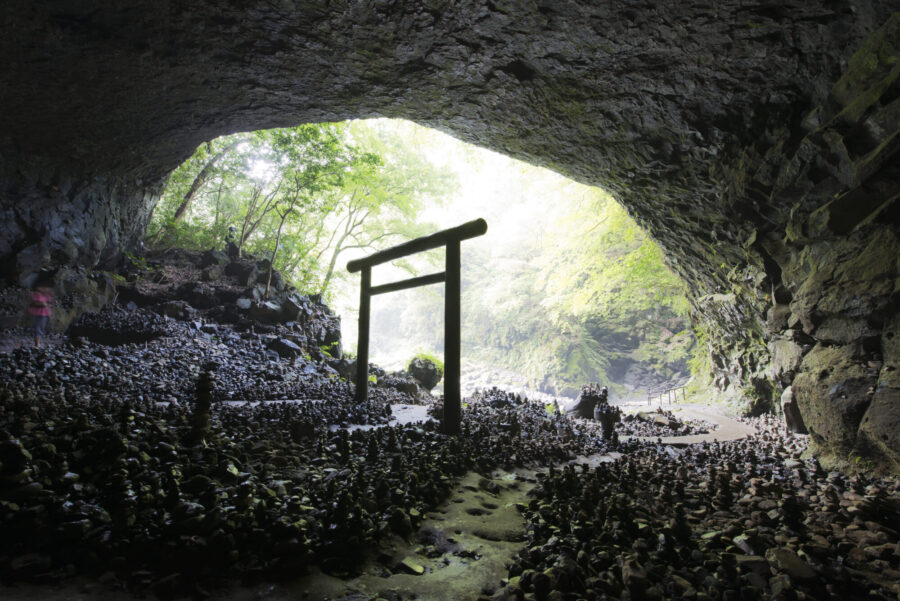
For more information about our projects and craftsmanship, please visit our official website:
🌐 Sato Construction (Shizenya)
Watch our latest video on YouTube and see how we bring traditional Japanese architecture to life:
▶️ Sato Construction YouTube Video
